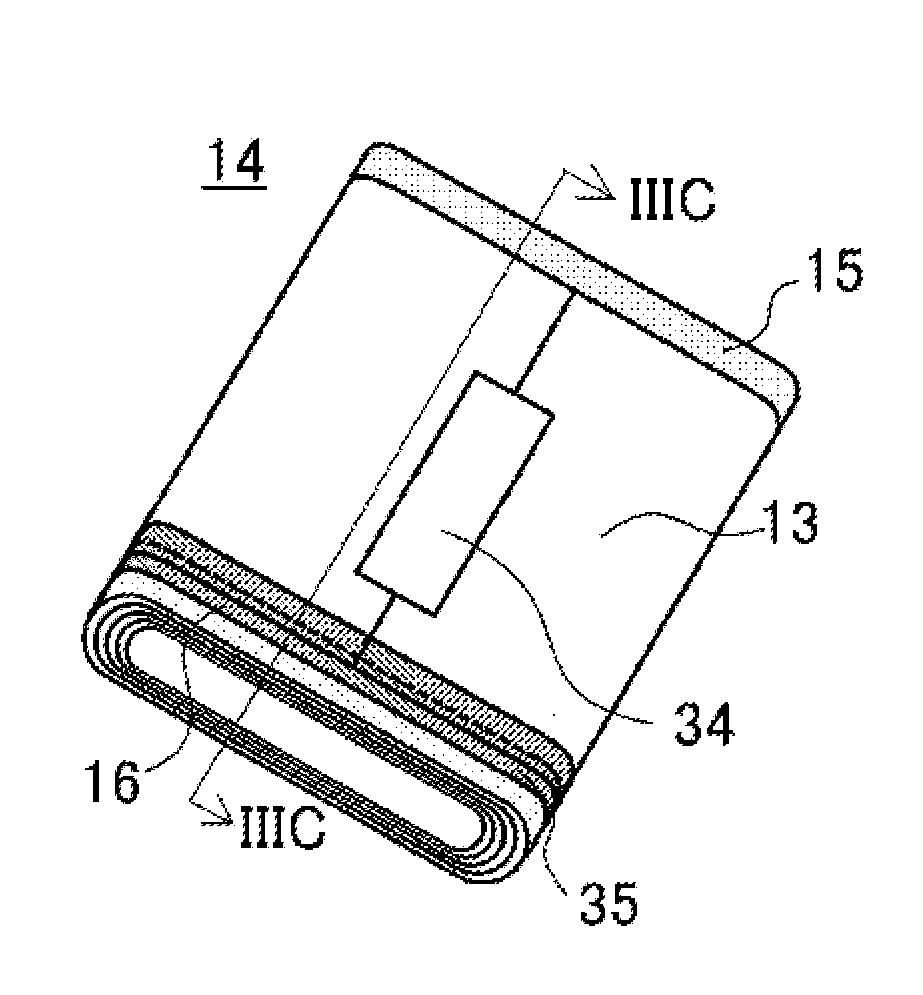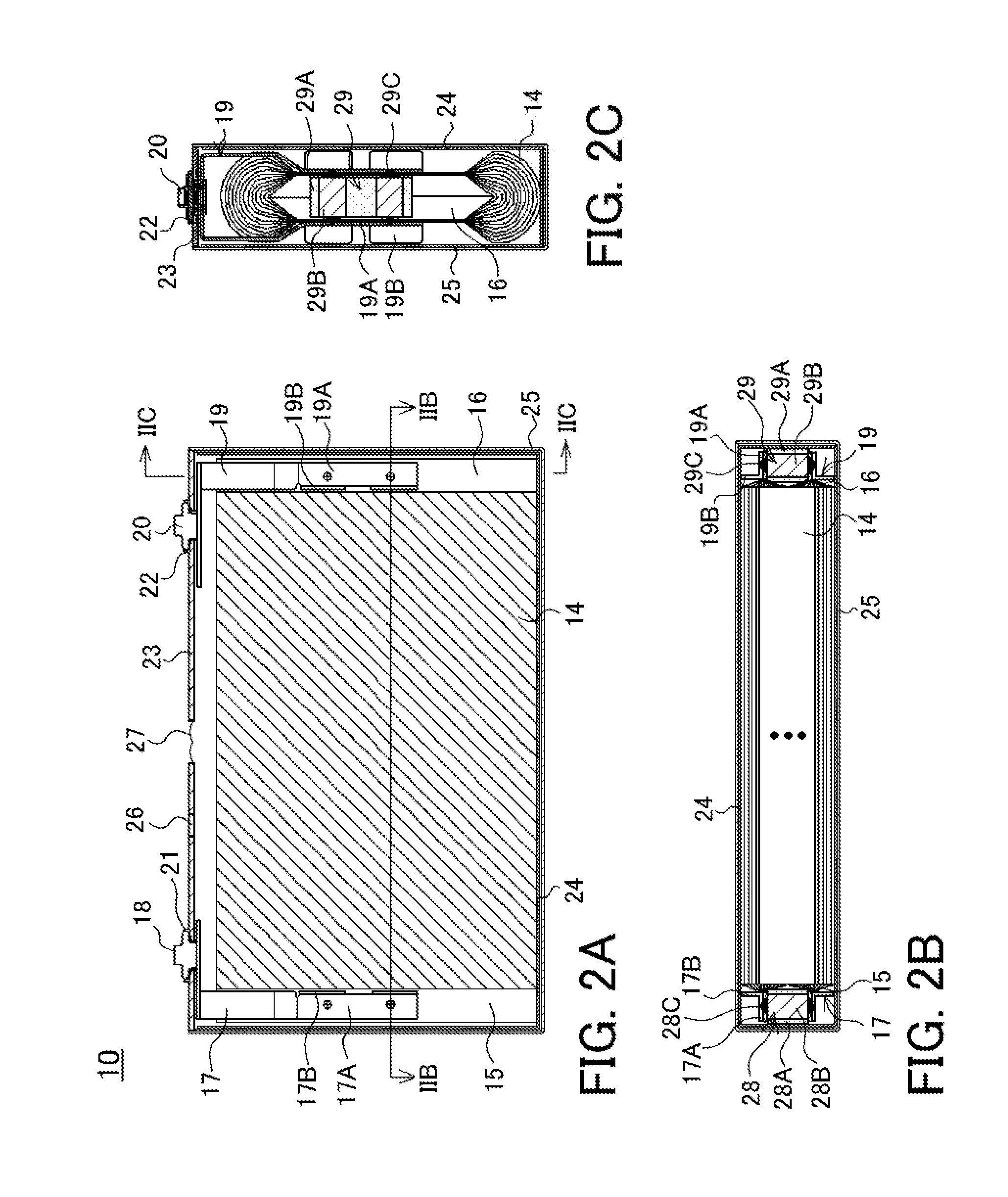Secondary battery
a second battery and battery technology, applied in the field of secondary batteries, can solve the problems of less reliability of batteries and decline in battery reliability
- Summary
- Abstract
- Description
- Claims
- Application Information
AI Technical Summary
Benefits of technology
Problems solved by technology
Method used
Image
Examples
modification examples 1 and 2
[0069]The embodiment described above has been exemplified using the negative electrode collector 19 coming into contact with both faces of the outermost surface of the bisectional negative electrode substrate exposed portion 16. It is not always necessary, however, that the negative electrode collector 19 connected to the negative electrode terminal 20 is in contact with both faces of the outermost surface of the bisectional negative electrode substrate exposed portion 16. The negative electrode collector 19 may be in contact with at least one of the faces of the outermost surface of the bisectional negative electrode substrate exposed portion 16.
[0070]The arrangement status of the negative electrode collectors 19 after resistance welding of Modification Examples 1 and 2 in which each negative electrode collector 19 connected to the negative electrode terminal 20 is in contact with one of the faces of the outermost surface of the bisectional negative electrode substrate exposed port...
modification examples 3 and 4
[0074]In the exemplified flat wound electrode assembly 14, as shown in FIG. 3A to FIG. 3C, the semi-floating prevention tape 35 is wound around the flat wound electrode assembly 14 at the boundary region between the separator 13 located in the outermost surface side and the negative electrode substrate exposed portion 16. In the flat wound electrode assembly, however, semi-floating and peeling of the negative electrode active material mixture layer at the outermost surface of the negative electrode plate tend to happen near corners. As Modification Example 3 shown in FIG. 6A and FIG. 6B, putting the semi-floating prevention tape 35 on each of four corners also provides excellent effects. FIG. 6A is a perspective view of a flat wound electrode assembly of Modification Example 3. FIG. 6B is a perspective view of the backside of the flat wound electrode assembly of FIG. 6A.
[0075]In the flat wound electrode assembly, when an end-of-winding portion 12b of the outermost surface of the neg...
PUM
| Property | Measurement | Unit |
|---|---|---|
| width | aaaaa | aaaaa |
| thickness | aaaaa | aaaaa |
| sizes | aaaaa | aaaaa |
Abstract
Description
Claims
Application Information
 Login to View More
Login to View More - R&D
- Intellectual Property
- Life Sciences
- Materials
- Tech Scout
- Unparalleled Data Quality
- Higher Quality Content
- 60% Fewer Hallucinations
Browse by: Latest US Patents, China's latest patents, Technical Efficacy Thesaurus, Application Domain, Technology Topic, Popular Technical Reports.
© 2025 PatSnap. All rights reserved.Legal|Privacy policy|Modern Slavery Act Transparency Statement|Sitemap|About US| Contact US: help@patsnap.com



